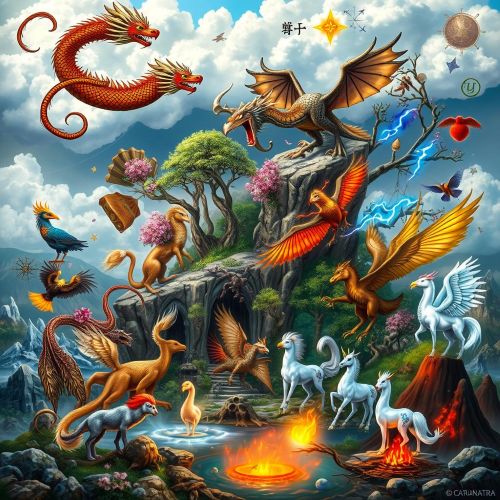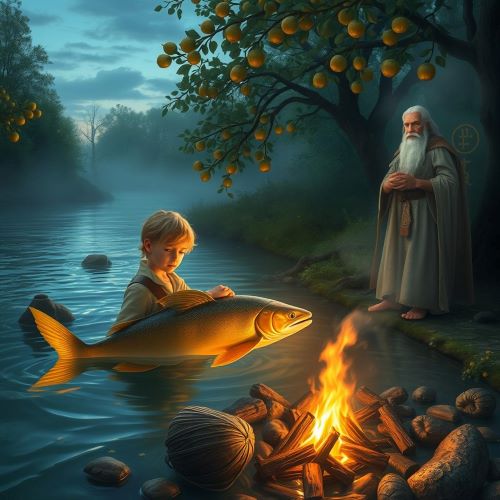Teaching Moral Lessons through Mythology in Schools
The Power of Myths in Teaching Morality
Stories have always been used as a powerful way of explaining right and wrong, even prior to textbooks being introduced in schools. Moral lessons about courage, honesty, and respect would spread on their wings through gods, monsters, and epic heroes from mythology. Teaching moral lessons via mythology allows schools to tap into that ancient power. When seventh-graders hear Icarus fly too close to the sun, the message of thoughtful risk-taking resonates more powerfully than if listed simply on a chalkboard. Myths often capture attention in ways modern examples do not. Students can draw parallels between the decisions made by mythic figures and challenges they are currently experiencing, such as peer pressure or digital citizenship, and those faced by students today. Furthermore, ethical questions have always been an ongoing discussion, and every generation has faced similar dilemmas. Myths offer teachers an effective tool for initiating deep discussions while keeping their classroom lively, creating an ideal learning environment that links timeless tales with real-life behavior, which in turn shapes habits among their pupils, encouraging empathy over indifference and action over inaction both inside and outside school walls. If you’re exploring reliable support for schoolwork, it helps to read in recent speedypaper reviews how others made thoughtful academic choices.
Why Myths Resonate Today
Why are myths still relevant today? For one thing, myths offer students something exciting and strikingly visual that is impossible to forget in classroom settings today. Myths offer both excitement and vivid imagery – two essential ingredients in creating captivating classroom lessons. Students watch as Perseus cuts off Medusa’s head, or Anansi the spider fools a larger animal, like watching a movie in their minds. Second, myths use exaggeration to highlight moral messages; children quickly grasp that keeping promises matters more than breaking promises! Thirdly, stories cross cultures. An important message about respect can travel from Greek temples to Norse halls and West African forests, showing that values connect people everywhere. Finally, myths open space for questions. Learners can debate whether Theseus was kind or selfish, honing critical thinking skills along the way. Students who consider multiple viewpoints (similar to checking is papersowl is legit) learn to verify facts rather than accept tales at face value.
Connect Mythic Stories to Modern Morals
Once the class understands a storyline, the next step should be tying it back into modern society. A teacher could place an excerpt from the myth on the board before asking students where it exists in our current environment. Students studying the legend of King Midas might identify modern-day examples of his greed by listing video-game credit hoarding or refusing to share art supplies. By translating his golden touch disasters into playground events, they gain insight into how their decisions impact other members and communities. Role-playing works well too; two volunteers can take turns acting out the decision to open Pandora’s box; then the class predicts what might happen if curiosity about that decision makes its way onto social media platforms. Graphic organizers provide an effective way of linking actions with outcomes: one column represents mythic deed, another its real-life parallel, and a final space for value statements such as “think before posting.” Group art projects – like creating a class mural of modern heroes inspired by mythic virtues – provide visual anchors and foster teamwork while encouraging reflection with discussions being age-appropriate and tangible.
Learning Through Myth
Making myth come alive takes creative planning. Many educators begin with storytelling circles where a teacher narrates part of a myth, stops at its climax point, and asks the group to imagine an ending that reinforces its values. Later, the class compares each imagined finish with its traditional one, noting where kindness, bravery, or wisdom rose or fell. As writing practice, students may switch viewpoints, retelling Helen’s brother’s perspective of the Trojan War. This exercise helps develop empathy by encouraging learners to step outside their personal experiences. Technology also contributes, with interactive maps allowing students to follow Odysseus across his journey and noting moral repercussions at each island. Before posting research, students discuss source reliability with one another. Merging digital literacy with myth study shows how truth discerning is an ageless skill, not limited to online platforms alone.
Assessing Progress and Preserving Stories
Evaluating moral growth can be complex; however, effective tools make the task manageable. Teachers frequently utilize reflection journals in which students write about how a weekly myth relates to an action they took in life. Entries should not be graded for “right” answers but for honest consideration and reflection. Rubrics might ask students questions such as, “Did the student identify a value?” and “Did they outline future action?” Another option could be creating a creative portfolio. Learners could create a comic strip illustrating how honesty could have saved Phaethon, or design a podcast discussing whether the Minotaur was villain or victim. Peer feedback sessions help students recognize strengths while offering gentle advice. As an effective way of keeping stories alive beyond a unit’s lifespan, schools may host Mythology Day. Costumes, skits, and cuisine from different cultures transform lessons into memories while families are invited as guests – reinforcing that ethics start both inside the classroom and at home – meaning lessons stay with students long after stories end their stories’ lifespans.
No posts were found.









